Today, the Public Art Fund‘s installation of “Hank Willis Thomas: The Truth Is I See You” opens at the MetroTech Center in Brooklyn, New York. The artist is featured in Whitewall’s summer 2015 Design Issue, where he talks about his Truth Booth project, an aspect of the public work on view through June 3, 2016. We’ve reproduced the article here.
Hank Willis Thomas was inspired by two things to become an artist: the price of a Sam Taylor-Wood photograph and Lil Wayne. In 2006 he was at Jay Jopling’s White Cube booth at Art Basel Miami Beach and realized that if a photograph—which he describes as a good one—could be sold for $50,000, he had to be worth at least 1 percent of that. The same went for Lil Wayne: if a teenager could get a word like “bling bling” into the dictionary and have one million fans, he thought he had to be able to find at least 10,000 fans. “It’s that kind of competitive cockiness, where I’m like, ‘I am at least 1 percent as good as you are,’” Thomas told us when we visited his studio earlier this year.
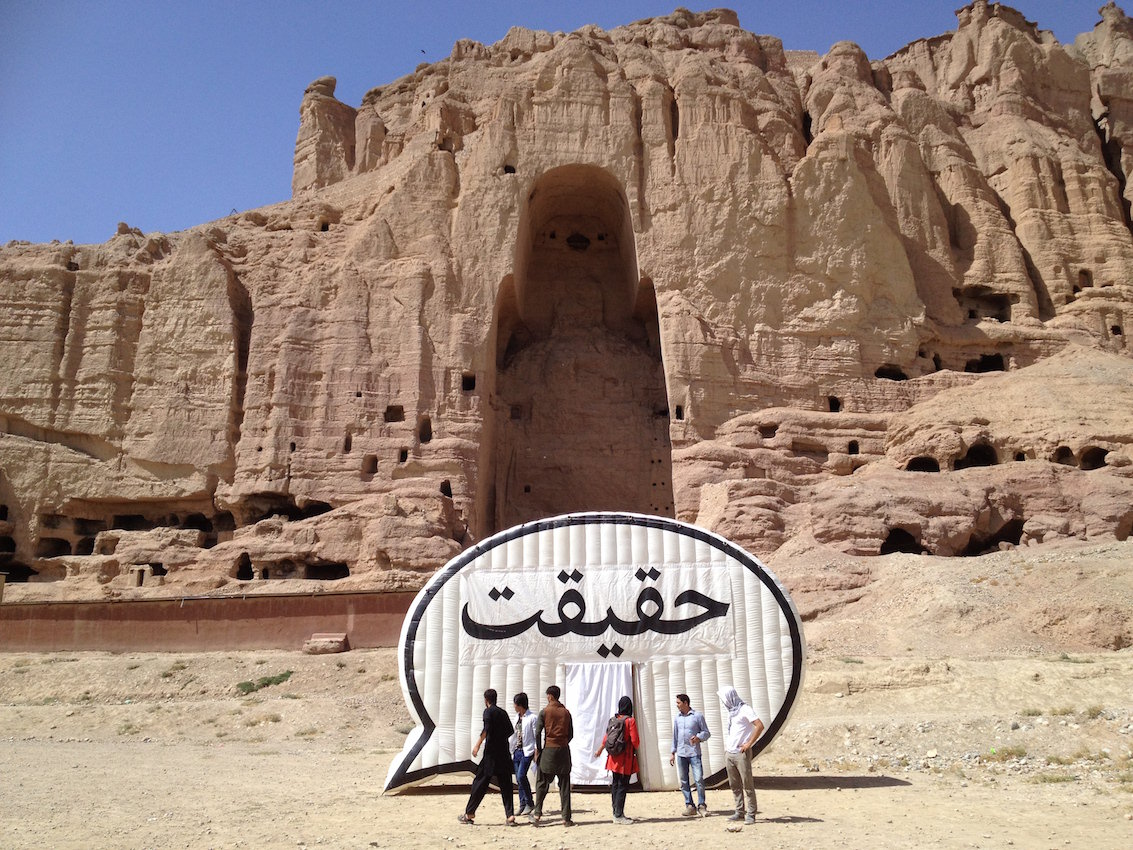
Courtesy of the Cause Collective
We were there to speak with him about his Truth Booth project, an inflatable and portable speech bubble that serves as a recording booth for the public to speak its truth. Across cities and towns in Ireland, the United States, Afghanistan, and South Africa, people go in the booth and are asked to finish the statement “The truth is” for a two-minute recorded video. Responses range from “The truth—I believe—is Legos. Legos are very small but they allow you to think big!” to “The truth is black women need to write our way back into humanity.” The project started in 2011 and is a collaboration between Thomas and the artists Ryan Alexiev and Jim Ricks.
Over the years, thousands of people recorded their “truths,” but it wasn’t until they were invited by Montblanc to create a short film for the brand’s “Power of Words” project, which involved the Nelson Mandela Foundation and the Tribeca Film Institute, that they edited the footage together. Last November in South Africa, on the anniversary of Mandela’s passing, the film for Truth Booth premiered.
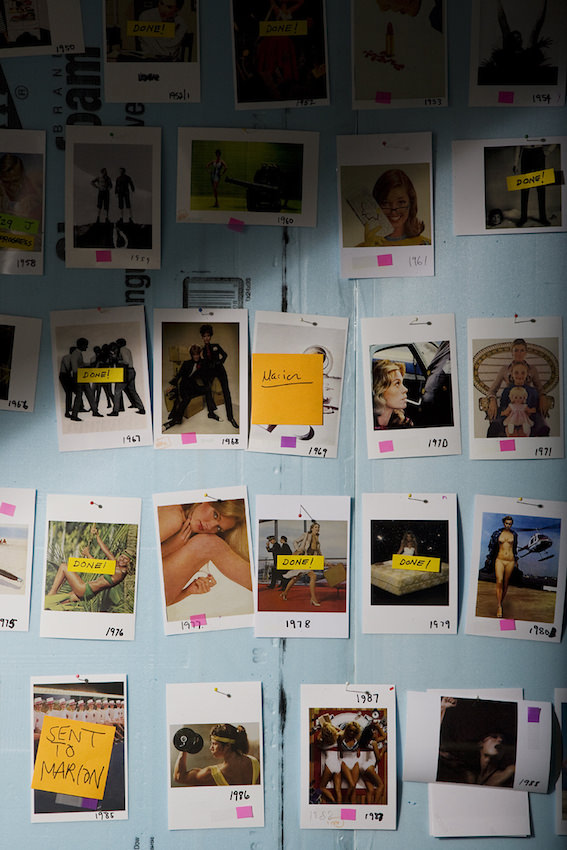
Photographs by Steve Benisty
Thomas spoke with Whitewall about the “Power of Words,” his current show, “Unbranded: A Century of White Women,” at Jack Shainman Gallery, and balancing commercial and public projects.
WHITEWALL: You have brought the Truth Booth to dozens of cities in Ireland, Afghanistan, the U.S., and recently South Africa for Montblanc’s “Power of Words” project with Kewku Mandela and the Tribeca Film Institute. How did you edit down all that footage—was there a theme you came up with?
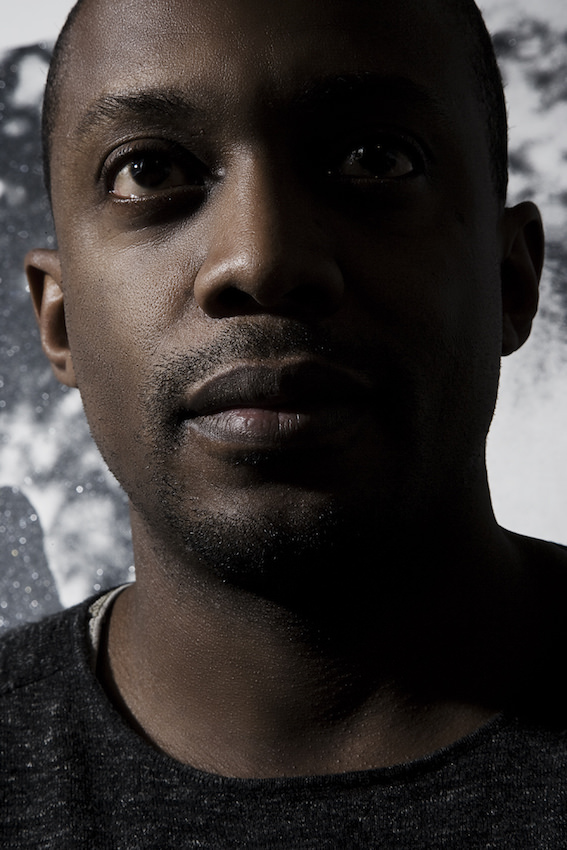
Courtesy of the Cause Collective
HANK WILLIS THOMAS: I’ve been to South Africa a lot, I have a gallery there, and I was really inspired by this documentary called Long Night’s Journey into Day about the Truth and Reconciliation Commission. Kweku Mandela wanted to use quotes from Nelson Mandela [for the “Power of Words”]. Will found the quote by Nelson Mandela, “The truth is we’re not yet free.” A lot of the issues that Mandela spoke about are universal issues.
WW: For this project, and the initial idea for the Truth Booth, why did you want to film people talking about the truth, as opposed to doing something else like writing it down?
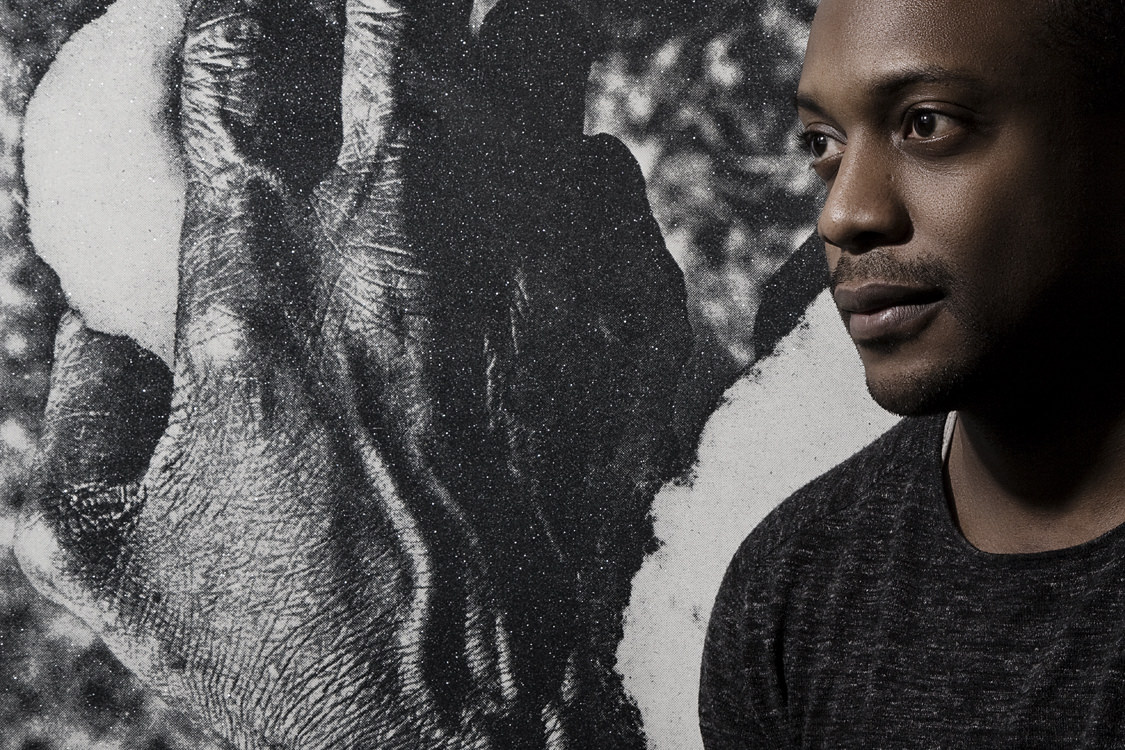
Photographs by Steve Benisty
HWT: Well, this project was specifically through Tribeca Film Institute, and I think social issue documentaries and short form documentaries are becoming something that people are paying more and more attention to because you can reach broader audiences and in faster ways. That’s why I do other projects, because unless you’re in my studio, or the museum or the gallery, no one really always has the time to go see the work. Our point was trying to bring the work to the people. Just the statement, where we were in South Africa, right outside the parliament, the idea of this big balloon that says “The Truth” in some of these contexts is kind of a potent statement anywhere. That’s as an installation as much as it is what people do inside the booth.
I’m a big believer in letting people show their face. And that’s what was scary and fascinating with Afghanistan, especially with the young women, because we don’t hear their voices. We hear all women in Afghanistan have this one experience, but, for instance, that one woman talking about getting an education was not nearly as covered, and you saw one woman who was fully covered and she was using her voice in a very articulate, explicit way, talking about issues and what she felt women need and deserve. You could write it, but it’s not the same—even if I couldn’t understand what she was saying, I could feel the passion in her voice along with reading the subtitles; there is a dynamism of that.
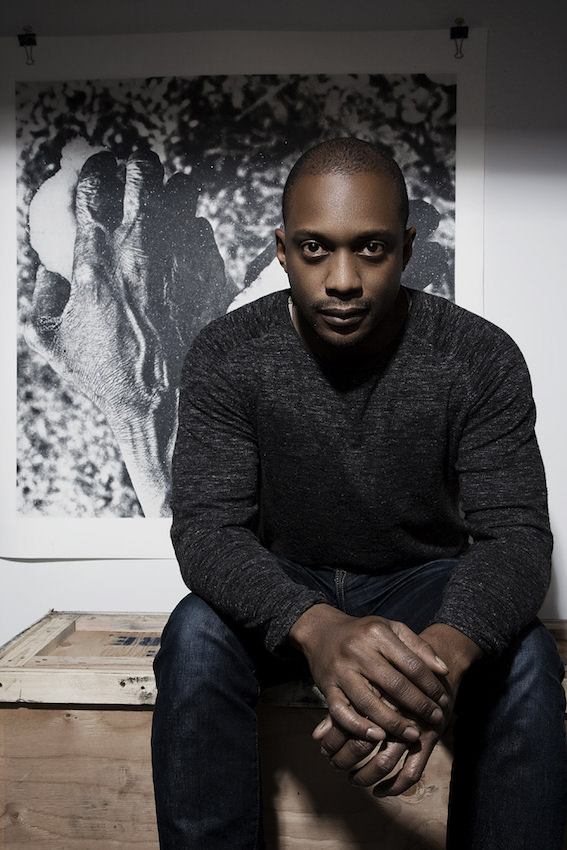
Courtesy of the Cause Collective
I can talk all day about things that I think are important, but what I liked about this project is that it gave me an opportunity to curate all this footage around these people’s voices. It’s rare that we have human engagement as an artist. Musicians engage with the people, but with artists, most of the people who have seen my work I will never meet.
WW: Was there a point at which you were showing work in galleries and museums, and then realized you needed to do something beyond that? Something where you engaged with the public?
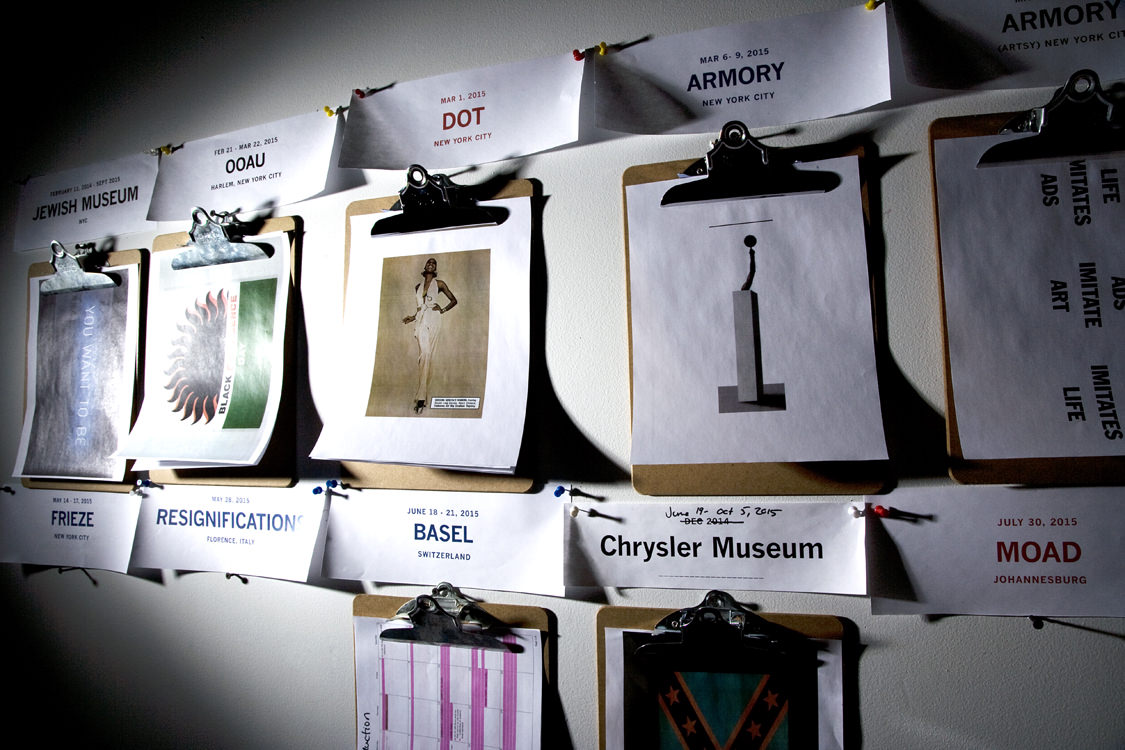
Photographs by Steve Benisty
HWT: I was traditionally a photographer. In photography, the medium changed so fast that everything that I learned in school became irrelevant from a technical perspective in three years. And what I loved about photography was first being out in the world, having to engage with strangers, taking pictures and then being in the darkroom in solitude. When I started having to look at screens all the time, I realized, “I’m not talking to people; I’m not engaging,” and so the idea of doing projects like the Truth Booth came from this need of interaction in the creative process. We do give them the two-minute time frame and an initial prompt, but they own it and they control it. The people who aren’t afraid to use their voices get heard. That goes back to this idea of the power of words: Use your voice, because if you don’t, other people will use theirs and you’re going to be listening rather than being a part of the conversation. And it’s important to do both.
The thing about being an artist, I think, is it’s one of the few careers where we would gladly pay to do our job. No one cares if I make art or not, and I’m going to do it anyway. And then if nobody likes it, I’m just going to hold on to it for the next thirty years and maybe somebody will want it. I do think by and large you have to make a living, a career; as an artist you have to pay, you have to buy equipment, and it’s not just about the time you spend with it. With that level of investment it’s harder to distinguish what’s for sale and what’s not for sale at the beginning [laughs], but then you realize certain things make money, but certain things make a different kind of impact. And you can’t put a price tag on impact.
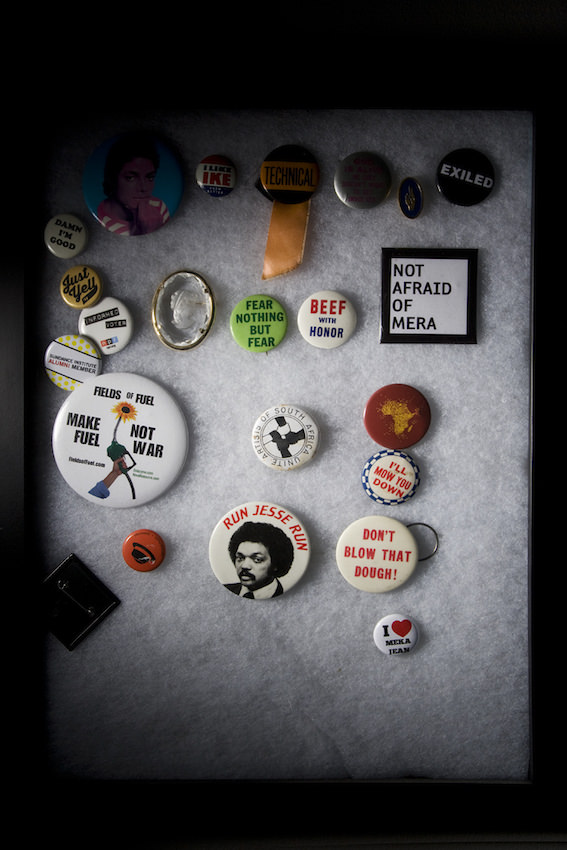
Courtesy of the Cause Collective
WW: You work in so many different mediums: sculpture, photography, video, sound, collaboratively . . . How do you decide which material will best translate your idea?
HWT: It depends on the piece and the space. I really think that the idea needs to kind of take its own form. I would be a lot richer if I just did one thing. And I could also just be good at it. [Laughs] For me, I’m always like, “I don’t know how to do that,” “Let me try this,” “Let me do that!” The Truth Booth and my other project Question Bridge are about democratizing history and what’s important and trying to show that just because you don’t have the degrees or you’re the famous person doesn’t mean that your voice isn’t important. So how do you make that message that everyone has the opportunity to make a difference? That’s what I think I’m trying to slowly do in my work.
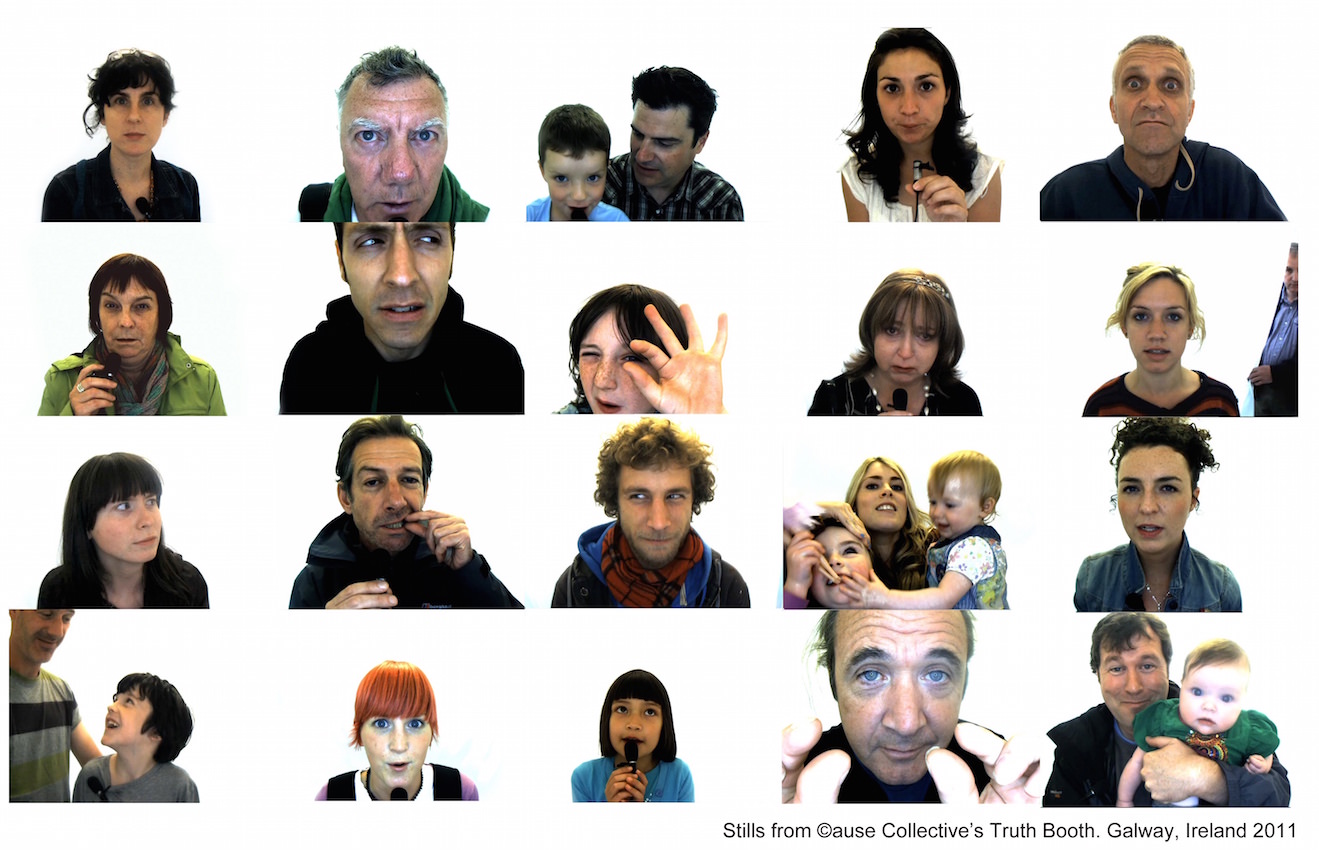
Photographs by Steve Benisty
WW: Did any of that feed into your show at Jack Shainman this summer, “Unbranded: A Century of White Women, 1915–2015”?
HWT: I’ve always been interested in how ideas about who we are, are shown by society. I think the issue of “black male identity” is that it’s life-threatening. That even though black people never had anything to do with creating it, we’ve got to play by its rules, and many of us are put at risk by it. I think what’s interesting for “white women” is that it’s actually more violently policed, and more constricting, in a way not always to your deficit, but it’s interesting to think about. So in 1957 Emmett Till was killed because he supposedly whistled at a white woman. She’s supposed to be so precious that someone else couldn’t even whistle at her, so how do you ever have freedom or agency [as a woman]? Maybe you want to be whistled at? Maybe you flirted? So there are all of these levels of confinement. Even the fact that black men technically, even though it wasn’t legally enforced, had the right to vote for 60 years before white women. Or that weird conversation about when it was Obama and Hillary, “Are you a feminist? or “Are you not racist?” There are these weird kinds of things that come up in these binary ways, and I wanted to talk about the complexities of that. I think people get confused that they think that because I’m a black man that that’s all I really care about. But really, I think, I’m using blackness as a signifier. I mean, it’s just a very obvious one because my skin is brown, but we call me black. Your skin is all kinds of colors, but it’s not white. So what are these definitions?
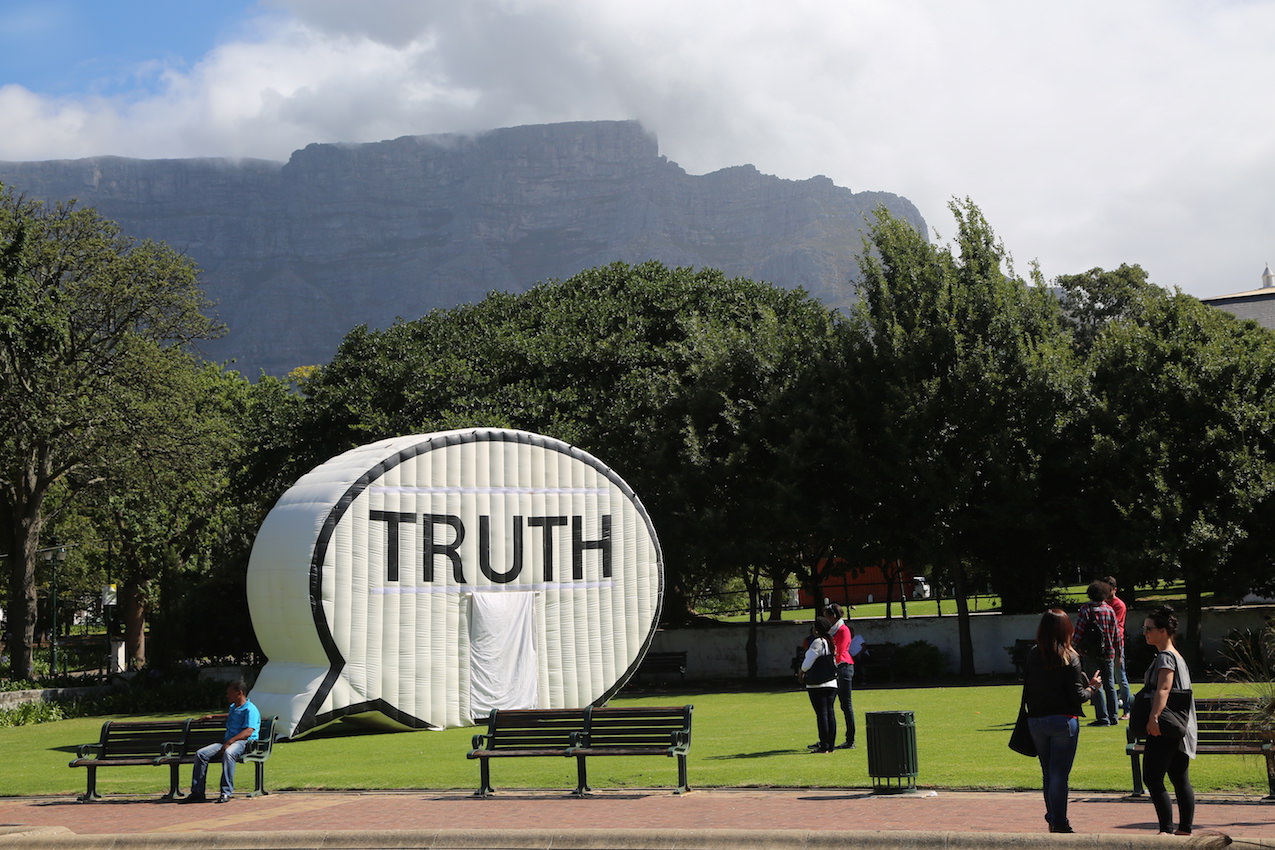
Courtesy of the Cause Collective
WW: In the gallery show, you’ve removed all text and branding from old advertisements featuring women and for women’s products. What was the idea there?
HWT: Advertising is never the product, if you think about what myths and generalizations you can attach to the product through branding. What I like about this project is you bring the information to it. I’m just showing you a picture, and whatever you read into it is your own prejudice or whatever it is. It’s all the same to me; it’s all trying to talk about these universal messages, but to approach them in different ways.
That’s what the Truth Booth is about and the “Unbranded” series. I would like to be seen as a person. You could say I’m a black male, but you could also say I’m a New Yorker, I’m a hundred and one other things as well. If I say I’m an artist who lives with his mom, which isn’t true but has been true [laughs], that’s different than, “He’s a black man,” “He’s an international traveler,” or, “He’s an educator,” or he’s any number of things that I might say. I just want to be seen as a person first, not to have any other kind of value placed on my life ahead of that.
The Truth Booth is really about that. My voice is not more important than the thousands of other voices created. All this work is about how when I stand next to this piece, and you stand next to this piece, we’re seeing different things. You’re always having to recognize that someone else’s perspective is equally as important as yours. You have to be conscious of your perspective.
WW: You’ve said, “I like thinking about history from various perspectives. I’m interested in how the perception of what’s real can be different depending on where you’re standing.” Your mother is a photo historian, and the chair of the photography department at NYU. I wonder how much her work and being raised around her interests affected your perspective early on?
HWT: My mother is why I know about that photograph [referring to a work on the wall in the studio that references a historic photograph]. When she was a junior in college and wanted to do an independent study project about black photographers, her professor was just like, “James Van Der Zee? Were there black photographers?” So she wound up doing a research project that became her first book, Black Photographers 1840–1940: An illustrated bio-bibliography [1985], which showed that there were black people making photographs as early as 1839, when photography was “invented.” We were all told about the “black experience,” that before the abolition of slavery everyone was illiterate, downtrodden. But if there were people making photographs in 1839, what you had to know about science, chemistry, not much less about the camera, that was some complicated stuff! So the fact that there were people of African descent in America at the time making photographs really forces you to rethink, which history? Obviously those people were photographing African Americans in very different ways than mainstream society, because at the time, mainstream society’s vested interest was to let people think that black people couldn’t do anything. So that’s where the idea of where you are standing affects what you see, is really relevant. Which history?
WW: Was it intimidating, going into photography then with a mother who knew so much about the medium?
HWT: And my father. My parents are both pretty dynamic. People tend to remember my dad. My father was raised in the segregated South; my mother, even though she was raised in Philadelphia, was told by her guidance counselor that the best she could hope to be was a secretary at city hall.
I had this dentist in New York, but who grew up with my dad in the South, and he was like, “Man, your dad was the first black man to bag groceries at the A&P, Florence, South Carolina. We used to just stand outside and slap him five.” I was like, “You’re a dentist! And your father was a dentist! And you guys would slap someone five for bagging groceries for white people?” To think in their lifetime things could change so dramatically, and they didn’t play by the rules. I think that is why choosing to become an artist as a career seemed to come more naturally to me. They couldn’t tell me what I was supposed to do because they didn’t.
This article is in Whitewall’s summer 2015 Design Issue out now.








